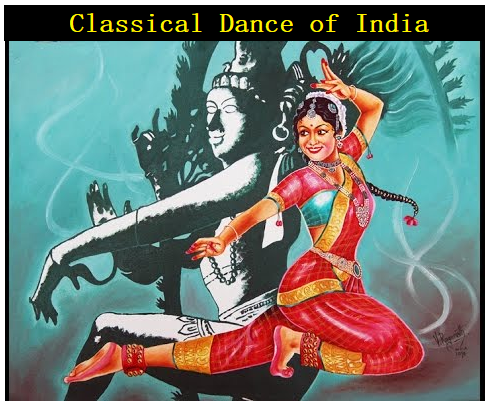
India is known as a cultural country and because of its cultural heritage, India has a different identity in the world.
India is a country of diversities where art exists in many forms. Many arts have developed in India since ancient times and dance is also one of them.
The dance tradition has been known in India since ancient times. The sculpture of the dancer found in the excavation of Mohenjo Daro shows that the dance was discovered during that period. We can also see the dance painting in the UNESCO world heritage site, Bhimbetka rock shelters (Madhya Pradesh). Dance tradition is also mentioned in Vedas, Puranas, Mahabharata, and Ramayana. At that time, dance was performed to worship God.
The Indian dance form can be classified into two categories - Classical Dance and Folk Dance.
In this article, we will talk about the Classical Dance of India. We will also talk about other topics like the Origin of classical dance, the 8 Classical dances of India, Classical dance of Indian states.
Before understanding classical dance, let us understand what is dance.
Dance: According to the rhythm and tempo of the music, dance is the movement of the body in a rhythmic way. dancing is the way to express an idea or emotion.
After understanding the definition of dance, let us start our topic, the classical dance of India.
Classical dance has great importance in India. Classical dance is based on ancient dance art. Classical dance art is the dance form that connects the learner to the ancient Indian tradition.
Most classical dance forms originated in temples. Worship and devotion was the main aim of classical dance. Later, the classical dance was performed in the courts for entertainment.
In the 18th and 19th centuries, Many Indian classical dance forms were discouraged by British colonialism.
Christian missionaries called harlots and debased erotic culture to temple dancers and demanded to stop this culture and started an "anti-dance movement" in 1892. So It became extinct due to the lack of proper respect for classical dance during the British period.
In the late 20th century, with the efforts of many people, classical dance was again given proper respect and the traditions of temple dancing were reintroduced.
The birthplace of each classical dance is different, but they have the same roots. Indian classical dance is based on the principle of Hindu religious text.
The root of all classical Indian dances is the ancient Hindu Sanskrit text “Natya Shastra”.
The “Natya Shastra” of Bharata Muni is considered to be the oldest scripture of dance. It is also called Panchaveda.
Classical dance is an important part of our cultural heritage. In classical dance, a dancer acts a story through different gestures. Most of the classical dances of India enact stories from Hindu mythology. Each classical dance represents the culture of a particular region to which they belong.
Classical dance is different from folk dance because classical dance strictly follows the rules of “Natya Shastra” and performs dance only according to the rules.
Three main components of classical dance are - Natya (the dramatic element of the dance), Nritta (the dance movements in their basic form), and Nritya (portrayal of mood through facial expression, hand gesture, and position of the legs and feet.)
The basic ras which is expressed in the classical dance form in India are given below
Initially, there were 8 ras. The ninth ras was added by (Shanta: Peace) Abhinav Gupta later on.
Now we know how many classical dances are there in India. The number of classical dance forms of India can be more than 8, but the Sangeet Natak Academy has recognized 8 classical dance of India. The Indian Ministry of Cultural added ‘Chau’ to the list of 8 classical dance of India.
The 8 classical dance of India are - Bharatnatyam, Kathak, Kathakali, Kuchipudi, Mohiniyattam, Odissi, Sattriya, Manipuri.
The scholar, Drid Williams included Chhau, Yakshagana, and Bhagavata Mela to the list of 8 classical dance of India.
Indian classical dance is famous all over the world. There are 8 Classical dance of India and each classical dance belongs to a different state. So let's have a look at the list of Indian Classical Dance.
|
Classical dance of India list |
||
|
Sr. No |
Classical Dance |
State |
|
1. |
Bharatanatyam |
Tamilnadu |
|
2. |
Kathakali |
Kerala |
|
3. |
Kathak |
Northern India |
|
4. |
Manipuri |
Manipur |
|
5. |
Mohiniyattam |
Kerala |
|
6. |
Kuchipudi |
Telangana / Andhra Pradesh |
|
7. |
Sattriya |
Assam |
|
8. |
Odissi |
Odisha |
Now we will talk about the 8 classical dance of India and their importance one by one. Each classical dance belongs to a different state and all have their own distinct characteristics.
The number of classical dance forms of India can be more than 8, but only eight classical dance forms of India are recognized by Sangeet Natak Academy. Let us know about the 8 Classical dance of India in detail.
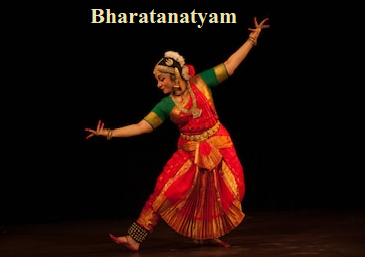
Bharatanatyam is the major dance form of Indian Classical dance. Bharatanatyam is the oldest classical dance form of India. It is a famous classical dance of the Southern state, Tamilnadu.
It is believed that the classical dance form ‘Bharatanatyam’ is revealed by Lord Brahma to Bharat Muni, who codified this dance form in a Sanskrit text called the ‘Natya Shastra’.
This classical dance originated in the Hindu Temple in the Tanjore district of Tamilnadu and it was developed by Devadasi.
Bharatanatyam is regarded as the mother of other classical dance of India.
Bharatanatyam is a solo dance that is performed mainly by women.
The word Bharatanatyam comprises some words. The word meaning of Bharatnatyam is given below -
Bharatanatyam is performed by certain families of the Tanjore district of Tamilnadu and these inheritors are known as Nattuvans.
Classical dances such as Bharatanatyam were presented as evil in society in the British period. But in the 20th century, Rukmani Devi Arundel and E Krishna Iyer tried for its revival. Both of them contributed a lot to the revival of this dance.
Bharatanatyam Dancer: Meenakshi Sundaram Pillai, Balasarswati, Rukmini Devi Arundel, Mrinalini Sarabhai, Yamini Krishnamurthy, Alarmel Valli, Padma Subrahmanyam, Vijanti Mala, Malvika Sarkar, Lila Semsan.
Male Bharatanatyam Dancers: C.V Chandrasekar, Uday Shankar (known as the Father of Modern Dance in India), Revanta Sarabhai, Vijay Madhvan, Nataraja Rama Krishana.
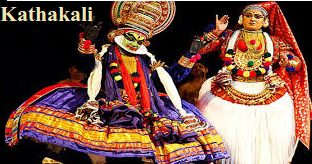
Kathakali is a major classical dance form of India and it belongs to the south Indian state, Kerala.
The word “Kathakali” means “Story Play”. The word Kathakali is made up of two words, Katha and kali. Katha means - Story and the word Kali means - Performance and Art.
Kathakali dance creates a distinct identity because of its makeup and costume. The costume of Kathakali is very heavy and large and the makeup is very elaborate.
The Kathakali dance usually depicts the legend of Mahabharat, Ramayan, and the Puranas as dances.
Kathakali dance is usually performed by men and female characters are also performed by men wearing female costumes.
But for the last few years, women also started to become Kathakali dancers.
The Kathakali dance symbolizes the fight between god and evil.
Kathakali dancer: Kottakkal Sivaraman, Kalamandalam Kesavan Namboodiri, Kalamandalam Ramankutty Nair, Kalmandalam Vasu Pisharody, kavungal Chathunni Panicker, Kanak Rele (She is one of the first female Kathakali dancers in India.), Guru Gopalakrishnan, Guru Kunchu Kurup (who was the first Kathakali artist to get the Indian national award for this dance form, etc), Gopinath, Ragini Devi, Udayshankar, Rukmini Devi Arundel, Krishna Kutti, Madhvan Anand, Sivaraman.
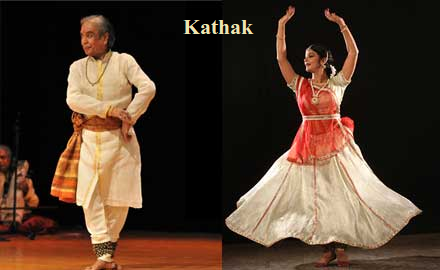
Kathak is a very famous dance form of Northern India. The word Kathak is derived from the word Katha, which means a story and the word Kathak means ‘to tell a story in the form of dance.
In the era of Muslim rulers, kathak was very famous and it was called Darbar Dance.
Most of the dance of Hindi films are also based on this dance style.
Kathak is also known as Navratri Dance. The ghungroos have a special place in this dance form because the main feature of this dance is the movement of feet.
There are three main Gharanas of this dance style - Jaipur Gharana, Lucknow Gharana, Varanasi Gharana, and a less famous Raigad Gharana.
The Jaipur Gharana focuses more on the ‘foot movements’, the Banaras and Lucknow gharanas focus more on ‘facial expressions and graceful hand movements.
Kathak Dancers: Shambhu Maharaj, Baijnath Prasad, “Lacchu Maharaj”, Sundar Prasad, Birju Maharaj, Sitara Devi, Gauri Shankar Devilal, Shovana Narayan, Puru Dadheech, Gopikrishna, Malvika Sharkar, Sunayana Hazarilal Agarwal, Kumudini Lakhiya, Rani Karnaa, Uma Shankar.
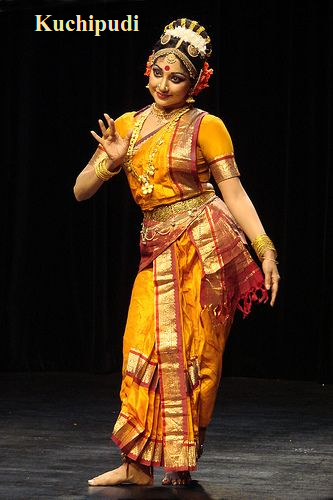
Kuchipudi is the famous dance form of southern state Andhra Pradesh. It is very famous all over south India.
The dance got its name from the village of Kuchipudi located in Dive Taluk of Krishna district.
According to the early tradition, Kuchipudi dance was originally performed only by men of the Brahmin community. The Brahmins living in the village of Kuchipudi used to practice this traditional dance. These Brahmin families were called ‘Bhagavathalu’ of Kuchipudi. They did not allow women in their dancing group.
But after the 20th century, Balasaraswati and Ragini Devi revived this dance and since then this dance has also become popular among women.
Earlier in this dance. Women's roles were played by men, but now women are playing the role of men.
Laxminarayan Shastri is credited with making Kuchipudi popular in modern times.
There is a specialty of Kuchipudi dance called, “Tergamam” in which the dancer stands and dances on the plate of kasya.
Kuchipudi Dancers - Lakshmi Narayan Shastri, Swapna Sundari, Raja and Radha Reddy, Yamini Krishnamurthy, Yamini Reddy, Kaushalya Reddy, Bhavana Reddy, Indrani Rahman, Shobha Naidu, Manju Bhargavi, Arunima Kumar, Mythili Kumar, Dantam Satyanarayan, Vempatti Chennasatyam.
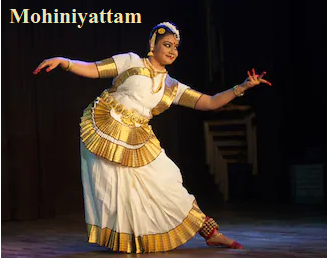
Mohiniyattam is a famous dance form of the south Indian state, Kerala.
Mohiniyattam is derived from the word "Mohini". According to Indian mythology, Mohini is a famous female avatar of Lord Vishnu, the god of Hindus.
The word Mohini means one who is fascinated by the mind ".
Lord Vishnu took the form of Mohini when there was a war between Dev and the Asuras and the Asuras took control over the Amrit. In the form of Mohini, Lord Vishnu took the Amrit of Asuras and gave it to the Dev.
When Lord Shankar was pleased with the austerity of the demon Bhasmasura and gave him a boon that the person on whom he will lay his hands will be consumed - then that evil wicked Bhasmasura tried to devour Shankara, Then again Lord Vishnu took the form of Mohini and lured him to death with his seductive aesthetic dance.
Mohiniyattam Is a solo dance form of Kerala performed by female dancers. Mohiniyattam dance originated in the temples of Kerala. Similar to Bharatanatyam, Odissi, Mohiniyattam dance originated from the devadasis in temples.
Mohiniyattam Dancers: Smitha Rajan, Kalamandalam Kalyanikutty Amma., Hemamalini, Bharti Shivaji, Kanak Rele, Sunanda Nair, Kalamandalam Radhika, Rema Shrikant, Pallavi Krishnan, Aline Civinelli, Kalamandalam Hymavathy, Radha Dutta, Sindhu Kiran, Radha Marar.
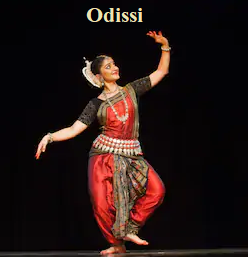
Odissi dance is one of the oldest classical dance forms. Odissi is the famous classical dance of the eastern state, Odisha.
Odissi dance was performed mainly by women in history. Odissi dance form originated from the dance of devadasi, who danced in the Hindu temple of Odisha.
Odissi dance is also mentioned in the rock inscription of the Brahmeshwar temple. Much historical evidence of Odissi dance is found in archaeological sites such as caves and in temple carvings of Bhubaneswar, Konark, and Puri.
Odissi dance enacts stories about the eighth incarnation of Krishna and Lord Vishnu.
One interesting thing about Odissi dance is that it is the only Indian classical dance that Micheal Jackson performed in the 1991 hit single ‘black or white.
Odissi Dancer: Sanjukta Panigrahi, Sonal Mansingh, Jhelum Paranjape, Madhavi Mudgal Kelucharan Mohapatra, Anita Babu, Arpita Venkatesh, Chitra Krishnamurti, Sharmila Biswas, Madhavi Mudgal, Sharmila Mukherjee, Madhumita Raut, Aloka Kanungo, Vani Madhav and Jyoti Rout, Minati Das, Priyvanda Mohanti.
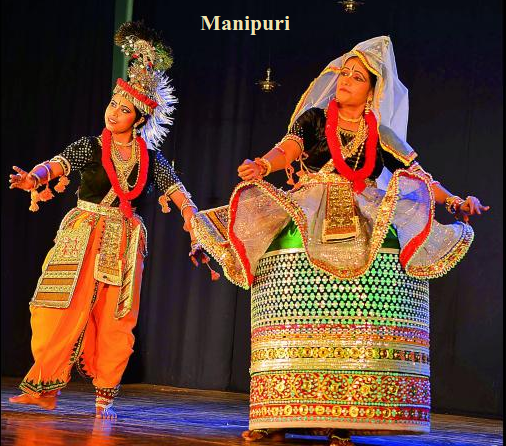
Manipuri dance is the famous classical dance form of the Northeastern state, Manipur. This dance form got its name after its place of origin Manipur.
Manipuri dance is also known as ‘Jagoi’.
Manipur dance is mainly based on the love affair of Radha and Krishna. This dance form depicts the event of the life of Vishnu and is expressed in the most gentle and powerful form.
Manipuri dance is different from other classical dance of India. In this dance form, the body moves at a slow pace. When Manipuri dance is performed by dancers, they don't move fast but place their feet on the ground with tenderness and softness.
The popular belief is that Krishna with his beloved Radha was the originator of Manipuri dance.
Manipuri dancers perform this dance by wearing embroidered ghagra, light muslin cloth, a white veil on the head, and traditional Manipuri jewelry.
Manipuri Dancer - Hanjaba Guru Bipin Singha (known as Father of Manipuri Dance and style), Guru Chandrakanta Singha – Narayanacharya, Guru Nilmadhab Mukharjee, Guru Haricharan singha, Bibhaboti Devi, Kalabati Devi, Guru Amli singh, Atamb Singh, Jhaveri Behne, Thambal Yama, Rita Devi, Gopal Singh.
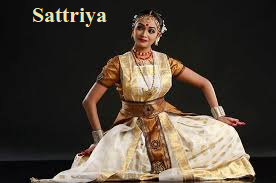
Satria dance is one of the eight Indian classical dance traditions. This dance is a classical dance of Assam. The founder of this dance was the great saint, Srimanta Sankaradeva.
This dance was performed in Vaishnava monasteries of Assam, which is known as Satra, hence this dance form came to be called Sattriya dance.
Initially, this dance form was performed only by men but now it is also performed by women dancers. On 15 November 2000, Sangeet Natak Akademi recognized Sattriya dance as a classical dance of India.
Sattriya Dancer: Sunil Kothari, Ranjumoni and Rinjumoni Saikia, and Upasana Mahanta, Rekha Talukdar, Ruparani Das Bora, Anjana Moyee Saikiaand Bobby Chakravarty, Moniram Dutta Mukhtiar Barbayan, Late Roseshwar Saikia Barbayan, Late Dr. Maheswar Neog , Late Dr Bhupen Hazarika, Late Ananda Mohan Bhagawati, Guru Indira P.P bora, Late Pradeep Chaliha, Jatin Goswami.
In this article, we learned about the classical dance of India in detail. Hope that through this article, you have gained important information about classical dances.